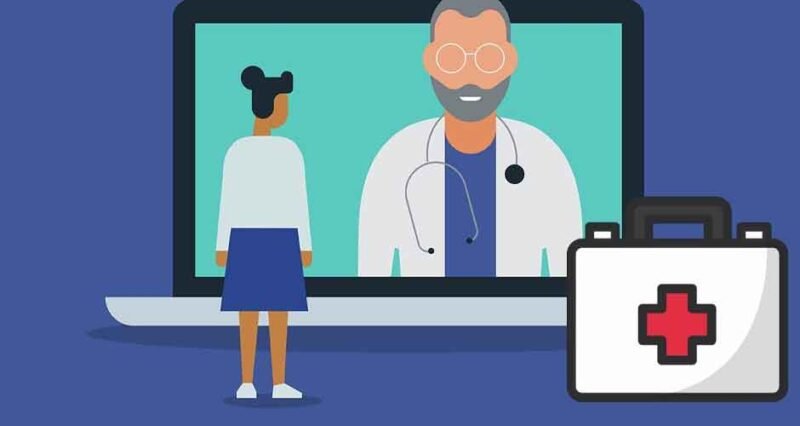
In recent years, telehealth has revolutionized the way healthcare is delivered. With the advancement of technology and the increasing need for remote medical services, telehealth platforms have become an integral part of modern healthcare systems. These platforms enable healthcare providers to deliver medical services to patients remotely, eliminating the need for in-person visits. But what are the features of the best telehealth platforms that are shaping the future of healthcare? This article will tell you.
User-Friendly Interface
One of the primary features of a top-tier telehealth platform is its user-friendly interface. The platform should be user-friendly and easy to use for both healthcare providers and patients. A well-designed interface enhances the user experience, making it simple for patients to schedule appointments, access medical records, and enable easy communication with healthcare providers. A user-friendly interface eliminates the learning curve and ensures seamless interaction between patients and healthcare professionals.
Secure Communication
Protecting patient information’s privacy and confidentiality is extremely important in telehealth platforms. The best platforms employ robust security measures to protect sensitive data. End-to-end encryption and secure video conferencing capabilities provide a safe environment for remote consultations. Secure messaging systems allow patients to communicate with healthcare providers, discuss health concerns, and seek advice without compromising privacy. Also, platforms with multi-factor authentication provide an extra layer of security, preventing unauthorized access to patient records.
Virtual Visits and Remote Monitoring
Telehealth platforms excel in providing virtual visits, allowing patients to consult with healthcare providers remotely. Through video conferencing, patients can receive medical advice, discuss symptoms, and receive prescriptions without leaving their homes. Advanced telehealth platforms also support remote monitoring, enabling healthcare professionals to remotely track patients’ vital signs, such as blood pressure and heart rate. This feature is particularly beneficial for patients with chronic conditions, as it allows them to receive timely interventions and reduces the need for frequent hospital visits.
Electronic Health Records Integration
Integration with electronic health records (EHR) systems is a crucial feature that distinguishes the telehealth platforms. Seamless integration enables healthcare providers to access patients’ medical history, previous test results, and treatment plans during virtual visits. This integration streamlines the consultation process and enhances the quality of care. Healthcare professionals can make informed decisions based on comprehensive patient information, leading to more accurate diagnoses and effective treatment strategies.
Prescription Management
Efficient prescription management is another vital feature to consider when evaluating telehealth platforms. The top platforms provide the ability to send electronic prescriptions, enabling healthcare providers to send prescriptions directly to pharmacies. It eliminates the need for paper prescriptions, reduces errors, and saves time for both healthcare providers and patients. Integration with pharmacies’ systems ensures a seamless transfer of prescriptions, enhancing medication management and adherence.
Appointment Scheduling and Reminders
Telehealth platforms should include robust appointment scheduling functionalities. Patients should be able to easily book appointments online, selecting the date and time that suits them best. Automated appointment reminders through SMS or email notifications help reduce no-shows and improve patient engagement. Some advanced platforms also offer waitlist management features, notifying patients if an earlier appointment becomes available, optimizing the scheduling process, and reducing patient wait times.
Mobile Accessibility
In today’s mobile-centric world, telehealth platforms should provide mobile accessibility for both patients and healthcare providers. Mobile applications enable patients to access healthcare services anytime, anywhere, using their smartphones or tablets. Mobile accessibility allows for increased convenience, as patients can have virtual visits or access medical records on the go. Healthcare providers can also benefit from mobile applications, allowing them to deliver care remotely and access patient information while on the move.
Integration with Wearable Devices
The integration of telehealth platforms with wearable devices is a feature that enhances the capabilities and effectiveness of remote healthcare. Wearable devices like smartwatches can collect a wealth of health data, including heart rate, sleep patterns, and activity levels. The best platforms can seamlessly integrate with these devices, allowing healthcare providers to access real-time patient data during virtual visits. The integration enables more personalized care and allows for better monitoring of patient’s health conditions. Healthcare professionals can track trends, identify potential issues, and provide timely interventions based on the data received from wearable devices.
Analytics and Reporting
Telehealth platforms with robust analytics and reporting capabilities provide valuable insights for healthcare providers and organizations. These features allow for the analysis of patient data, appointment trends, and overall platform usage. Analytics can help identify areas of improvement, optimize workflows, and enhance patient outcomes. By generating comprehensive reports, they enable healthcare organizations to measure the telehealth services’ effectiveness and efficiency. Data-driven decision-making can lead to continuous improvement and the delivery of high-quality care to a larger patient population.
Telehealth platforms have emerged as a game-changer in healthcare, providing convenient and accessible medical services remotely. The best telehealth platforms incorporate user-friendly interfaces, secure communication channels, virtual visits, and remote monitoring capabilities. Integration with electronic health records, efficient prescription management, appointment scheduling, and mobile accessibility are also key features to consider.

